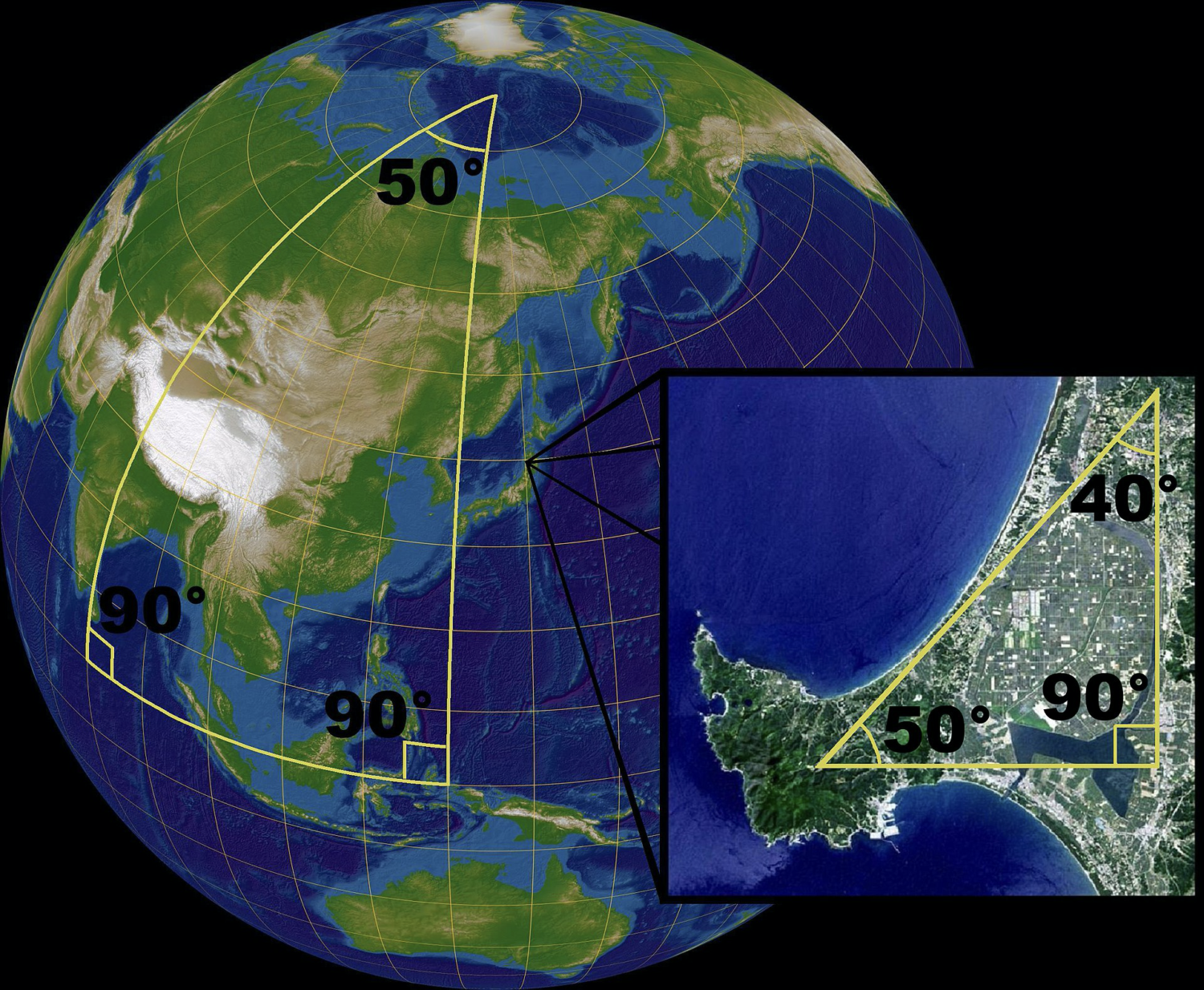Today is an age of reason and science. So much so that anyone who believes in anything that can’t be deduced logically and replicated through the scientific method is mocked. Popular and shaky subjects like metaphysics, witchcraft etc, are attempted scientifically and proved to be nothing but empty air. Reiki, crystal healing, homoeopathy, etc, are considered the realm of charlatans. This article is not about these so-called pseudo-sciences. Instead, it takes a long and hard look at the so-called scientific process itself and asks a critical fundamental question.
Why there’s an unshakable faith in science and reason
Ever since the Renaissance, the collective human knowledge has been advancing at frightening speed; new truths are discovered, rigorously tested and accepted as fundamental, which serves as a foundation for future ideas.
The approach seems to have been remarkably successful. By now we have solutions for everything — pills for accurately controlling or treating diseases, surgical procedures to manipulate the insides of the body, various branches of psychology to deal with the mental issues, vehicles to carry us around, computers to enhance our productivity and creativity…
Science, it would seem, has conquered not just the world we live in, not also the world within, but has even created and mastered virtual worlds. It’s natural, then, that when somebody comes along and raises a finger at science, or the way of living science has granted us, we’re furious.
This backlash at everything unscientific is everywhere. Scientists such as Richard Dawkins are writing books and giving talks openly mocking all religions and the very idea of a higher intelligence. In fact, Scientology is a religion unto itself, itself believing science to be above all, and include popular figures such as Tom Cruise as followers of the religion.
But what is this scientific method of inquiry?
The scientific method explained “scientifically”
What is the scientific method? The idea isn’t new, but was perhaps most lucidly explained by the celebrated physicist Richard Feynman in one of his lectures in the Cornell University in 1964 (interestingly, there’s a YouTube video available, https://www.youtube.com/watch?v=OL6-x0modwY). According to him, this method of collecting and verifying knowledge that can explain observable phenomenon in the universe consists of the three steps:
- Guess (the underlying reason or theory for the event observed is guessed at)
- Compute (based on that theory, we compute some results to match against the observations from the physical world)
- Compare (we match the theoretical results so obtained with observations taken directly from nature)
The class attending the lecture laughed when he mentioned the first point, and Feynman said in a serious tone something along the lines of, “Do not laugh, for this is the most important step”. And indeed it is, as these are the exact steps that led to the formulation of the famous theories and equations of history.
What’s “scientific” about this method is two things:
- It builds only on scientific truths established earlier.
- It can be repeated by any other individual.
That is, any person in the world who is familiar with the requisite body of knowledge can use the proposed theory, work out predictions for the observable universe, and then match their predictions with actual results. No matter how many people do this, results must coincide.
Such a method is not available in for instance, witchcraft. If you ask 20 people to perform a séance, they’ll have all different experiences, and there’s a good chance that these experiences will be nothing but imagined. Since there’s no guarantee that the spirit summoned will show itself, and there’s no well-defined form or properties of the spirit, the practice of witchcraft is labelled “unscientific”.
Shaky foundations
Readers with even a little astuteness would have noticed how the first step sticks out like a sore thumb: “guesswork”. We initially have to guess the underlying agency at work. Suppose we’re wondering about why apples take on a red hue while guavas turn out green (generally speaking). In the scientific method, it’d be valid to start with the assumption that some benevolent fairies worked out these colours in, say 6700 BC, and since then been hard at work to ensure consistency.
Of course that explanation is silly, but it wouldn’t be if we were to be able to back it up through observation and logical (that is, mathematical and scientific) deduction. It just so happens that Chemistry is mature enough to explain what produces these colours, and also predicts other colours consistently.
However, the idea that we start with guesswork leave out wide room for two major possibilities:
In light of new evidence that contradicts established knowledge, the established knowledge has to be discarded and even forgotten.
While still true, the hypothesis (guesswork) we posited can be the part of a much bigger truth with opposite properties. In other words, within the small context of our experiment, the theory holds, but in the wider picture, it falls apart.
Let us consider some concrete examples of both these points, which indicate that our faith in science might not be so unshakable.
Discarding previous knowledge
This point doesn’t need much elaboration. There are many “scientific” truths that were once widely accepted but have now been summarily proven to be false and discarded. For example:
Lobotomy was considered a clear-cut cure for mental illnesses and was heavily practiced until the 1950s. Today we know that the procedure not just walked all over patient rights, it was also ineffective and had severe side-effects and permanent brain damage.
A scientist named Dalton once asserted that everything was made up of atoms, and that atoms were the smallest particles in existence. Today we know that atoms are astonishingly far from being the smallest particles (scores of tinier, more fundamental particles have been found since then, and more keep getting found the more physicists experiment by colliding existing particles at very high energies; so much so that the search for the smallest particle has been more or less given up in the modern times).
When these “scientific” “truths” were discovered in their era, people had unshakable confidence in them. Today we know with absolute certainty that those ideas were false, and yet today we have absolute, unshakable faith in the current ideas. Can you spot the pattern here?!
On second thought, you need not think that far back or ahead. Just look at the series of contradictory medical “studies” that keep getting published (wine is good, wine is bad, wine is good, wine is bad; ghee is good, ghee is bad, ghee is good, ghee is bad) and ask yourself whether this looks like any commonsensical method, let alone a scientific one!
A larger, contradictory truth
People who did not study science in their school years may not know these phenomena, but a little online research will provide easy-to-follow explanations if needed.

Euclid was a famous mathematician from Greece who made fundamental contributions to the theory of Geometry. Even a school-going kid knows that in a triangle, the sum of all the internal angles is 180 degrees. An enormous body of geometry has been developed on Eclid’s basic principles (he gave thirteen self-evident truths in Geometry, which are known in the mathematical circles as The Thirteen Postulates).
For hundreds of years this held true. Students in exams and architects designing angular surfaces relied (and still rely) on the “truth” that all three angles inside a triangle, when summed up, will add up to 180 degrees.
But we now know it’s not always true. In the 18th Century, a Swiss mathematician by the name of Leonhard Euler formalised another type of geometry called Spherical Geometry. This geometry is studied for bounded surfaces drawn on a sphere, and when it comes to a triangle, some of Euclid’s postulates break down.
The image above shows two triangles: one drawn on a sphere, and another drawn on a plane, flat surface. The one on the sphere has its angles add up to 90 + 90 + 50 = 230 degrees, much more than than the expected 180 degrees. In fact, it’s possible to have all the three angles on a spherical triangle to be 90 degrees, the total being a whopping 270 degrees!
That does not mean Euclidean Geometry is wrong. It just means that it’s a special case of Spherical Geometry (which, in itself, has to be a special case of geometry from higher dimensions), and cannot be touted as “proved, mathematical, pure, unfaltering, all-pervasive, eternal truth”.
Another example
Issac Newton was an extraordinary intellect of our history. Some even call him the biggest intellect of history (and if we don’t venture into the Vedic history, I agree). During his lifetime, he produced a huge number of remarkably powerful ideas in a varied field of sciences, but mostly in mathematics and physics. In mathematics, he’s known for the development of Calculus, while in physics, he provided the famous Three Laws of Motion.
The Three Laws of Motion are three, rather simple, mathematical equations that describe how objects move in the real world under various forces. Without these laws, it would have been impossible to build cars, guns, prepare calendars in advance, or do any of the things the modern civilization stands on.
If you’re thinking that this sounds beyond the realm of human capability, you’re right. So completely and accurately did his laws describe everything that a few years after Newton’s life, physicists were beginning to believe that the branch of study was about to exhaust. The Three Laws predicted everything with near-perfect accuracy, and soon mankind would have to move on to other fields of study.
This lasted until 1905, when the now immortal Einstein dropped the bomb of Special Relativity theory on the world. Ten years later he revealed his so-called General Theory of Relativity. Scientific discoveries are rarely the stuff of the press, but in that era it created a public sensation that has been rivalled by few historic events, scientific or otherwise. And it completely broke the back of Newtonian physics.
It opened up this another dimension, much more complicated and unruly, in which the Three Laws stood zero chance. It described possibilities like time travel, and said that mass and energy were basically two sides of the same coin. So complex is the Theory of Relativity that it’s impossible to explain purely in words (without advanced mathematics, that is) and it’s very difficult to accept its deductions because they run exactly contrary to intuition.
The Theory of Relativity, along with some other theories, gave rise to Quantum Mechanics and the fancy ideas of an infinite universe, multiple universes, black holes, and so on. Einstein has achieved a godlike stature in our culture. And today we’ve made the same mistake — assuming that what he gave us is the ultimate truth. Because today, we’re discovering tiny phenomena that do not follow Einstein’s theory (look up Quantum Coupling if you’re interested).
Keeping our eyes open
If the reader takes away the impression that the current scientific world is a lie and must be destroyed, it’d be a massive error of judgment. The world that we live in is our reality and we’ll do best to follow it: vaccines, medications, vehicles, computers, etc. Forcing yourself out of this (by living in a forest or other means) will only make it worse.
However, the reader must reflect on what they believe about life and what science tells us about it. For all we know, the science of the next century might mock us for being total idiots.
If that’s the case, perhaps there’s room to consider these other areas of inquiry that are experiential and subjective in nature? Perhaps at least the Yogic sciences can be taken more seriously, something that was demonstrated by the Dhyan Foundation to the medical fraternity and thus received a certification from the Indian Medical Association?
Perhaps we are, after all, making a huge mistake by running after desires, with no thought for the creation? And perhaps, we will know these things to be absolutely true when we die, but by then it will be too late?



